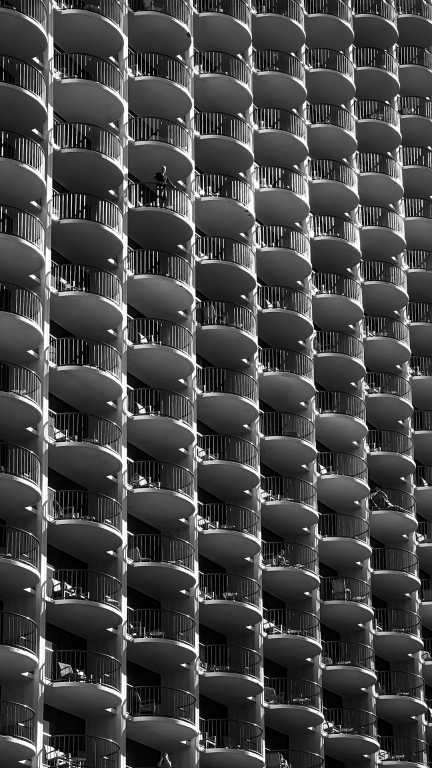Safety nets are an essential component of any building or construction site to protect workers and prevent accidents. Regular inspection and maintenance of safety nets are crucial to ensure their effectiveness and prolong their lifespan. In this article, we will discuss some tips for proper inspection and maintenance of safety nets, focusing on pigeon nets for balconies.
Pigeon nets for balconies are commonly used to prevent birds from nesting or perching on balconies and causing damage or health hazards. These nets are made of durable materials such as polyethylene or nylon and are designed to withstand exposure to the elements. However, regular inspection and maintenance are necessary to ensure that they are in good condition and continue to provide effective protection.
1. Regular Inspection
The first step in maintaining safety nets, including pigeon nets for balconies, is regular inspection. Inspect the nets at least once a month to check for any signs of wear and tear, damage, or deterioration. Look for any holes, tears, loose threads, or weak spots in the netting. Pay particular attention to areas where the net may be under stress, such as corners or edges.
2. Clean the Nets
Dirt, debris, and bird droppings can accumulate on pigeon nets over time, affecting their effectiveness and potentially causing damage. Clean the nets regularly using mild soap and water or a gentle detergent. Avoid using harsh chemicals or abrasive cleaners, as these can weaken the netting material. Rinse the nets thoroughly and allow them to dry completely before reinstalling them.
3. Repair Damage Promptly
If you notice any holes, tears, or other damage during your inspection, repair it promptly to prevent further deterioration. Use a strong, weather-resistant adhesive or thread to patch up small holes or tears. For larger areas of damage, consider replacing the affected section of the netting. Make sure that the repair is secure and will not come loose under stress.
4. Check Attachment Points
Safety nets, including pigeon nets for balconies, are typically attached to the building using hooks, rings, or anchors. Inspect these attachment points regularly to ensure that they are secure and in good condition. Replace any damaged or rusted hardware to prevent the net from coming loose or failing.
5. Monitor Tension
Proper tension is essential for the effectiveness of safety nets, including pigeon nets for balconies. Nets that are too loose may sag or bulge, compromising their ability to prevent birds from entering the balcony area. Nets that are too tight may put undue stress on the netting material or attachment points, leading to premature wear and tear. Adjust the tension of the nets as needed to ensure that they are taut but not overly stretched.
6. Trim Vegetation
Overgrown trees, bushes, or vines near the balcony can pose a risk to safety nets, as birds may use them to access the balcony area. Trim back any vegetation that is in close proximity to the nets to prevent birds from perching or nesting nearby. This will also help to improve the airflow around the nets and reduce the risk of damage from falling branches or debris.
7. Inspect After Severe Weather
Severe weather events such as storms, strong winds, or heavy snowfall can put additional stress on safety nets, potentially causing damage or loosening attachment points. Inspect the nets after any severe weather to check for signs of damage and make any necessary repairs. Consider installing additional support structures or reinforcement for the nets if they are exposed to frequent severe weather conditions.
8. Replace Worn-Out Nets
Despite regular inspection and maintenance, safety nets, including pigeon nets for balconies, will eventually wear out and need to be replaced. Signs that a net may be reaching the end of its lifespan include extensive damage, fraying or unraveling threads, or weakening of the netting material. Replace worn-out nets promptly to maintain the safety and security of the balcony area.
In conclusion, proper inspection and maintenance of safety nets, including pigeon nets for balconies, are essential to ensure their effectiveness and prolong their lifespan. By following these tips and taking proactive measures to care for your safety nets, you can protect your building and its occupants from accidents and damage. Remember to inspect the nets regularly, clean them when necessary, repair any damage promptly, and monitor their tension and attachment points. By investing time and effort in maintaining your safety nets, you can enjoy peace of mind knowing that your building is protected.
For more information visit:
Ypl Safety Nets
https://www.yplsafetynets.com/
09600035014
Flat No : G4, Ganesh Apartment, Sakthi Nagar 4th St, Thiruvalluvar Puram, Choolaimedu,
YPL Safety Nets offer professional installation of safety nets, including pigeon nets, Bird Spikes, and cat nets for balconies. Our reliable services ensure safety. Call us.
Stay safe and secure with yplsafetynets.com! Our high-quality safety nets provide peace of mind for any environment. Visit our website to discover our wide range of products and services to protect your loved ones today.
![]()
![]()
![]()
![]()
![]()
![]() For more information on pigeon net for balcony contact us anytime:
For more information on pigeon net for balcony contact us anytime:
Ypl Safety Nets
https://www.yplsafetynets.com/
09600035014
Flat No : G4, Ganesh Apartment, Sakthi Nagar 4th St, Thiruvalluvar Puram, Choolaimedu,
YPL Safety Nets offer professional installation of safety nets, including pigeon nets, Bird Spikes, and cat nets for balconies. Our reliable services ensure safety. Call us.
Stay safe and secure with yplsafetynets.com! Our high-quality safety nets provide peace of mind for any environment. Visit our website to discover our wide range of products and services to protect your loved ones today.

